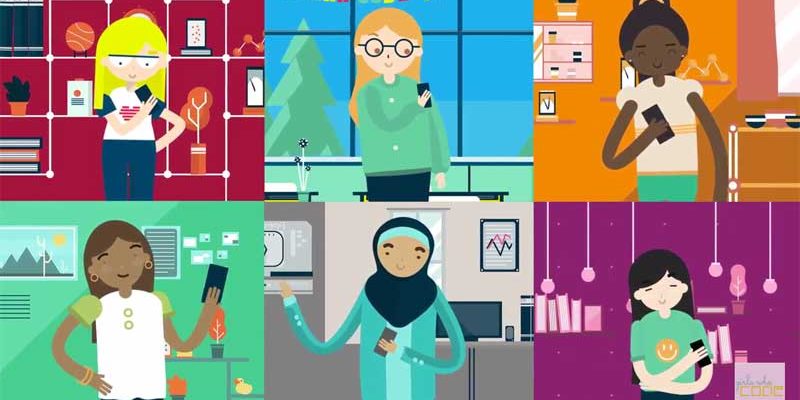Below on this page you can find the coding topics that the facilitators and students will work on and learn together when they join the GWC.
It has three levels, from either one you wish to start off on: Beginner, Intermediate, and Advanced.
Each section will be detailed taking you from step to step throughout the whole project! You will find a little summary next to each topic indicating what it is and what you will do!
Beginner
Animations in Scratch: You’ve probably seen many animations in your life. From cartoons to movies to video games, animations are everywhere. This section will help you unlock your inner animator, and you’ll use computer science to create your own custom animation! The programming language you will learn in this section would be Scratch. Scratch is a block-based programming language, To program in Scratch, you drag and connect Code Blocks to create commands that control various characters, called sprites.
Quiz Game in Scratch: In this project, you’ll build computer science skills to design a quiz game in a language called Scratch. Using your Club’s theme, you’ll create a game that others can play to test out their knowledge. In the process, you’ll learn about core computer science concepts and the way that games can be used to help people have fun, learn new ideas, make new friends, and build on their strengths.
ChatBot in Python: This Tutorial will help you create your own custom chatbot! You may have encountered a chatbot if you called somewhere with an automated phone service or chatted online with an automated help system. A chatbot is a computer program that simulates conversations with a real person. A chatbot is a simple form of Artificial Intelligence. Often, Artificial Intelligence is abbreviated as AI. Some of the chatbots you seen are in Starbucks to let you place your drink order or Spotify to help you find new music. To build this chatbot, all you need is your computer scientist strengths: bravery, resilience, creativity, and purpose.
Info App In Thunkable: Mobile applications are everywhere. From Google Maps to Snapchat, having applications accessible from your pocket makes life easier and fun. Mobile apps appeal to a different audience than web applications. According to the Pew Research Center, 95% of teens have access to a smartphone. Since mobile apps are popular throughout the world, mobile application development has become an in-demand skill. This project will help you learn how to design your own mobile application.
Intermediate
Adventure Game in Scratch: You’ve probably seen or heard of adventure games like Minecraft, Super Mario, or Little Big Planet. This project will show you how you can not only make adventure games but make games that matter to you! The most classic adventure game style is a Choose Your Own Adventure Game. CYOs go back many generations and are an interactive form of storytelling. To build this game, you’ll need some of your beginner computer science skills.
Interactive Magazine in JavaScript: This project will help you create a custom interactive webpage of flip board magazine articles! We can read and interact with our favorite newspapers and magazines online – flipping the pages and uncovering details related to an image all at the click of a button. By the end of the project, you’ll create your own interactive magazine that will include mini-magazine highlights of some of your favorite things.
Advanced
Platforming Game in Scratch: In platform games, a player controls a character to make it move through a 2D environment, jumping over obstacles and platforms to advance in the game. If you’ve ever played Super Mario Brothers on a 2D screen, this is an example of a platform game. What other kinds of platform games have you played?
APIS in JavaScript: Ever wonder how you’re able to connect various apps to your Google or Twitter account, or how apps can be built to use your Facebook account to generate a meme about you? It all works through an API, or an Application Programming Interface. In this project, we’re going to teach you how to create a program that uses an API. You can choose the API to be whatever you like.




